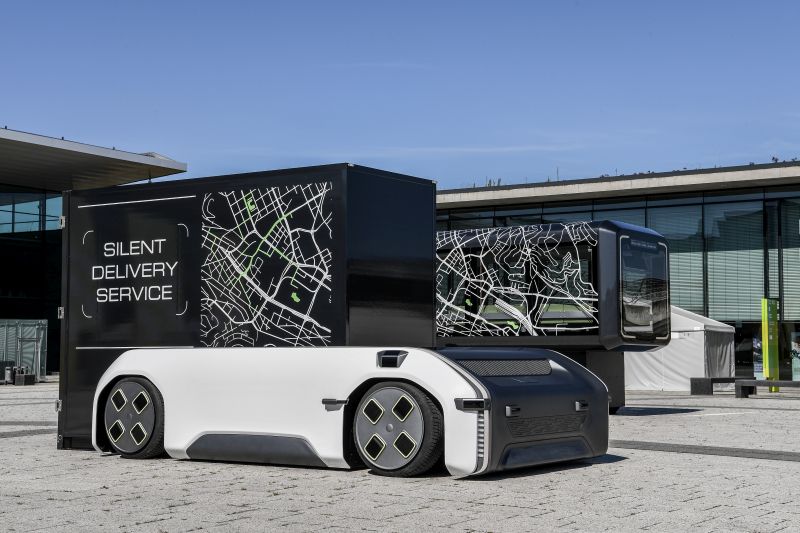
The aim of the autonomous, driverless and electric vehicle project is to enable a new type of modularity and thus also new intermodality, new products and business models by separating the driving module and the transport capsule
The driving module can be used in combination with different types of capsules to transport both people and goods. Examples of applications include autonomous, electromobile night delivery, autonomous intra-logistics and barrier-free passenger transport.
In the project "U-Shift I - Mock-Up", a 1:1 demonstration model of the innovative modular vehicle was developed and produced. It was presented in September 2020 at the digital conference of the Strategic Dialogue for the Automotive Sector in Baden-Württemberg. In the follow-up project "U-Shift II - Demonstrator", the modular vehicle will be tested in a closed-off area in order to research and work on the development as well as the product maturity for the market launch.
The technical development of the vehicle is accompanied by a dialogue with citizens. The project team provides insights into the development and takes on board ideas from civil society. The focus is on possible applications and future visions of the U-Shift vehicle.
The autonomous drive module, known as the "driveboard", integrates all components and systems necessary for driving. In addition to the electric drive, battery and automation components, this is an integrated lifting system for the simple and quick exchange of different types of capsules. The capsules are changed "on-the-road", i.e. during operation, to enable new transport and mobility services. This results in the following advantages:

The capsules are only equipped with the most necessary technical equipment and can therefore be produced cost-efficiently. This results in further advantages:
Automation is much more closely linked to the infrastructure than today's Cooperative Automated Driving (CAD) approaches. U-Shift uses the next level of automation - Managed Automated Driving (MAD). Key elements for this are:
Network coordinator:
Federal Republic of Germany's research centre for aeronautics and space (DLR): Institute of Vehicle Concepts
Project duration:
U-Shift I: 10/2019 – 12/2020
U-Shift II: 04/2020 – 12/2024
Project partner:
The project is funded by the Ministry of Economics, Labour and Tourism Baden-Württemberg.